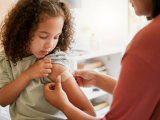Mar 1, 2010
Alabama officials cite continuing H1N1
Pandemic H1N1 flu hasn't ebbed as much as anticipated in Alabama, according to public health officials there. Although frequency was higher in the fall than it is currently, cases are still occurring across the state, and there were three deaths in February, a pattern unlike previous flu epidemics. The state ran a large school immunization program earlier in the winter, but school absences in the state remain higher than the typical 5%.
http://www.tuscaloosanews.com/article/20100301/NEWS/100229483/0/APN?p=1&tc=pg
Mar 1 Tuscaloosa News story
LA County notes uneven vaccine distribution
Pubic health data show that the H1N1 influenza vaccine was distributed unevenly across Los Angeles County, with the north and south sides getting disproportionately less, according to an LA Times story today. The reason for the disparity primarily lies in the lower number of healthcare providers in those areas, which translates into fewer requests for vaccine, county health officials said. They admitted that some of the efforts to ensure equal access to vaccine failed.
http://www.latimes.com/features/health/la-me-h1n1-supply1-2010mar01,0,5487898.story
Mar 1 LA Times story
Pneumonia worse with H1N1 vs seasonal flu
Pandemic H1N1 flu virus has the intrinsic ability to cause more severe pneumonia than seasonal H1N1 flu, concludes a study in the Journal of Infectious Diseases. This ability is a key measure of a flu virus's pandemic potential. The researchers inoculated ferrets intratracheally—to model influenza pneumonia in humans—with pandemic H1N1, seasonal H1N1, or highly pathogenic H5N1 virus. Findings showed the pandemic virus to cause pneumonia intermediate in severity between the other viruses.
http://www.journals.uchicago.edu/doi/abs/10.1086/651132?rss
Feb 26 JID study abstract
How H1N1 transmits in households
An April 2009 outbreak of pandemic H1N1 flu in a New York City high school, reported in the Journal of Infectious Diseases, had an 11.3% attack rate of flu-like illness among household contacts. Protective factors were older age, antiviral prophylaxis, and having a family discussion of flu. Risk factors in parents included caring for the index patient and, in siblings, watching TV with the patient. Half the secondary illnesses occurred within 3 days of the index patient's onset of illness.
http://www.journals.uchicago.edu/doi/abs/10.1086/651145?rss
Feb 25 JID study abstract
Study: 40% of kids with H1N1 otherwise healthy
Canada's IMPACT monitoring program has reported that, in the first wave of the pandemic (May-August 2009), 324 cases involving hospitalization occurred in the country's children. Of 235 for whom case details were available, 69% were older than 2, with a median age of 4.8; 40% were previously healthy; 50% received antivirals; and two died. The data show the disease course and risk groups affected to be similar to those for seasonal flu but use of antivirals to be higher.
http://dx.doi.org/10.1016/j.vaccine.2010.02.044?rss
Feb 26 Vaccine article


















